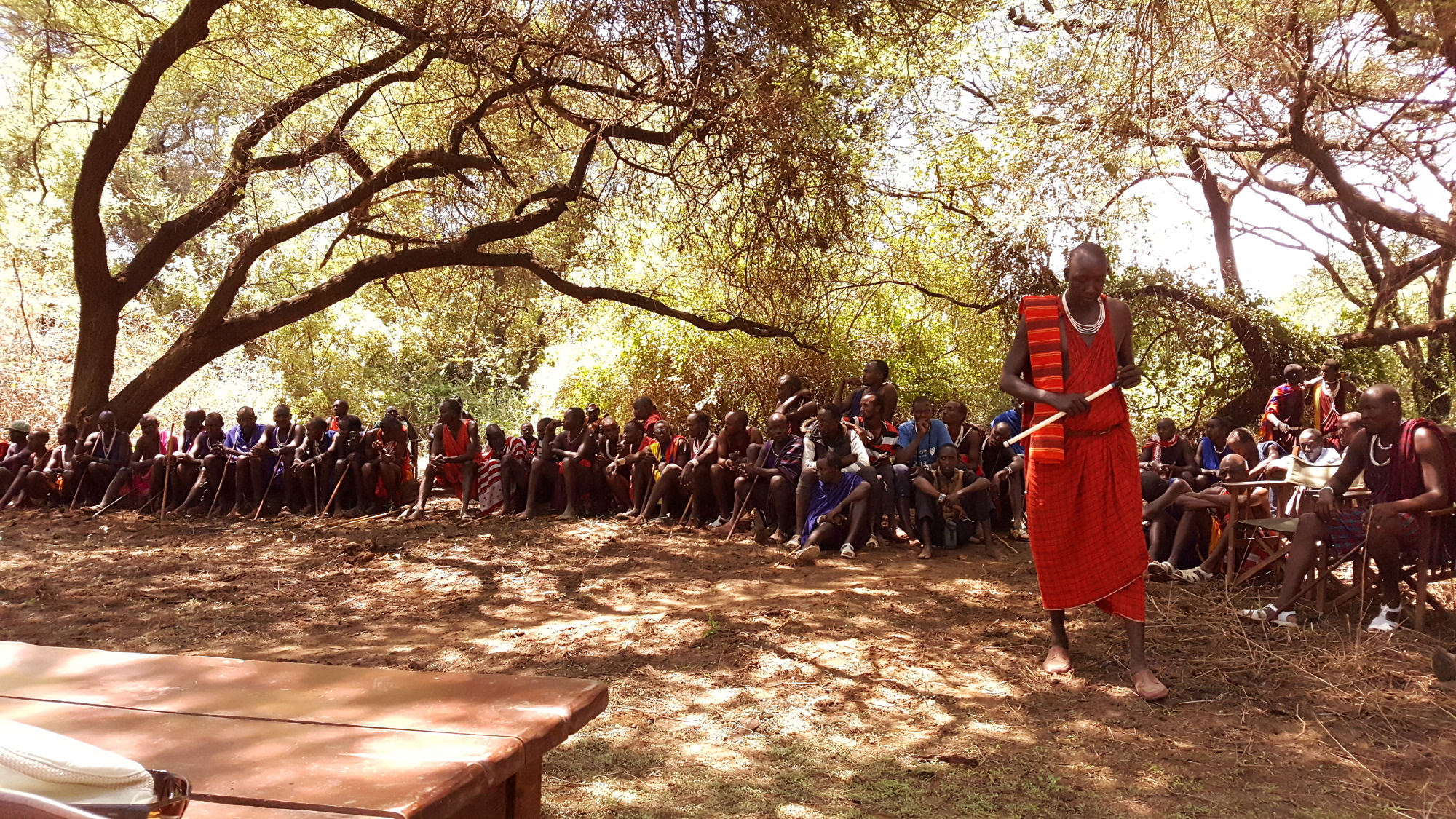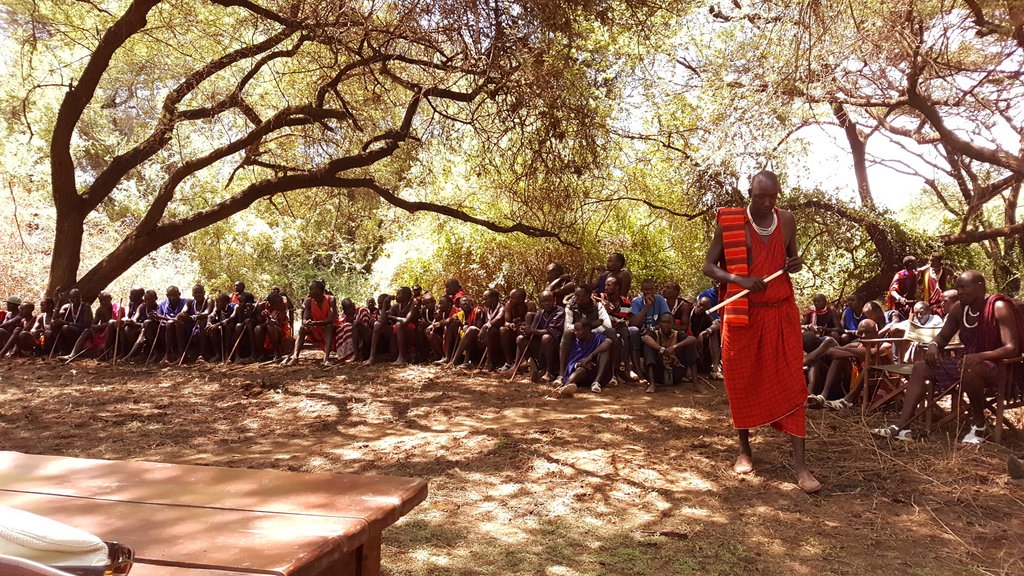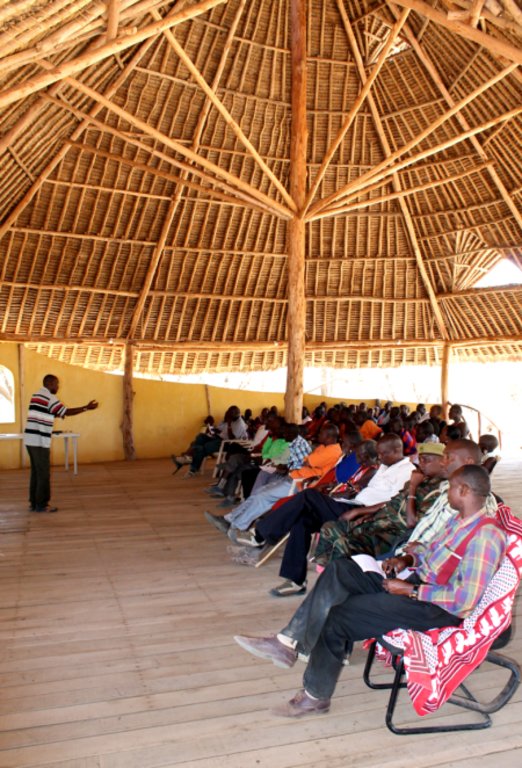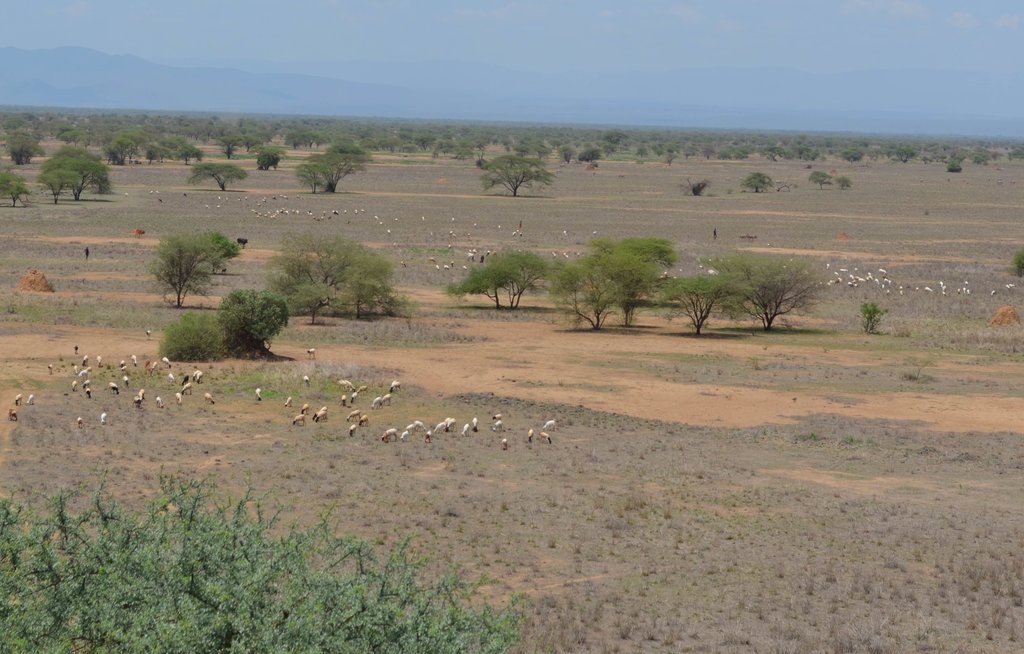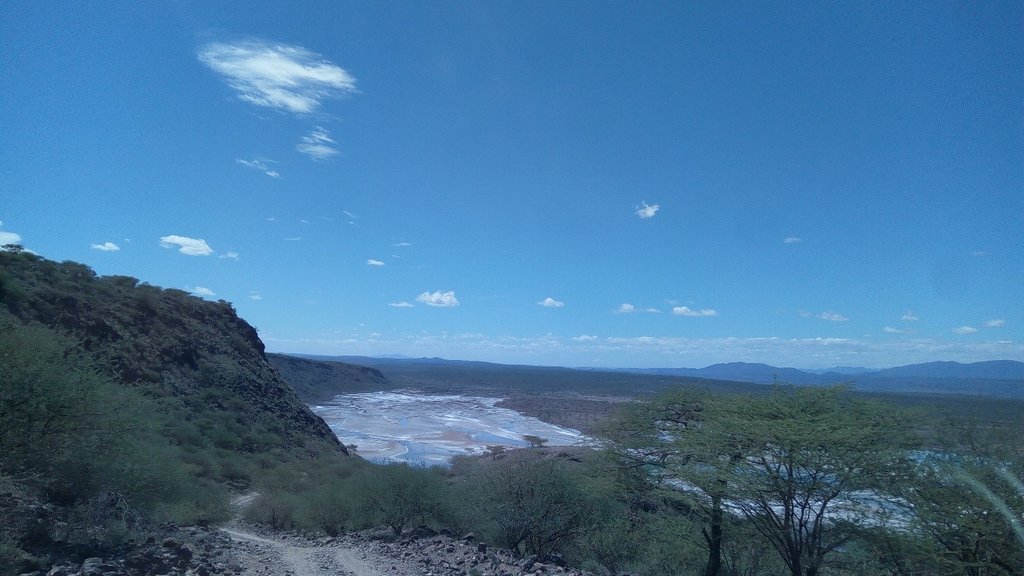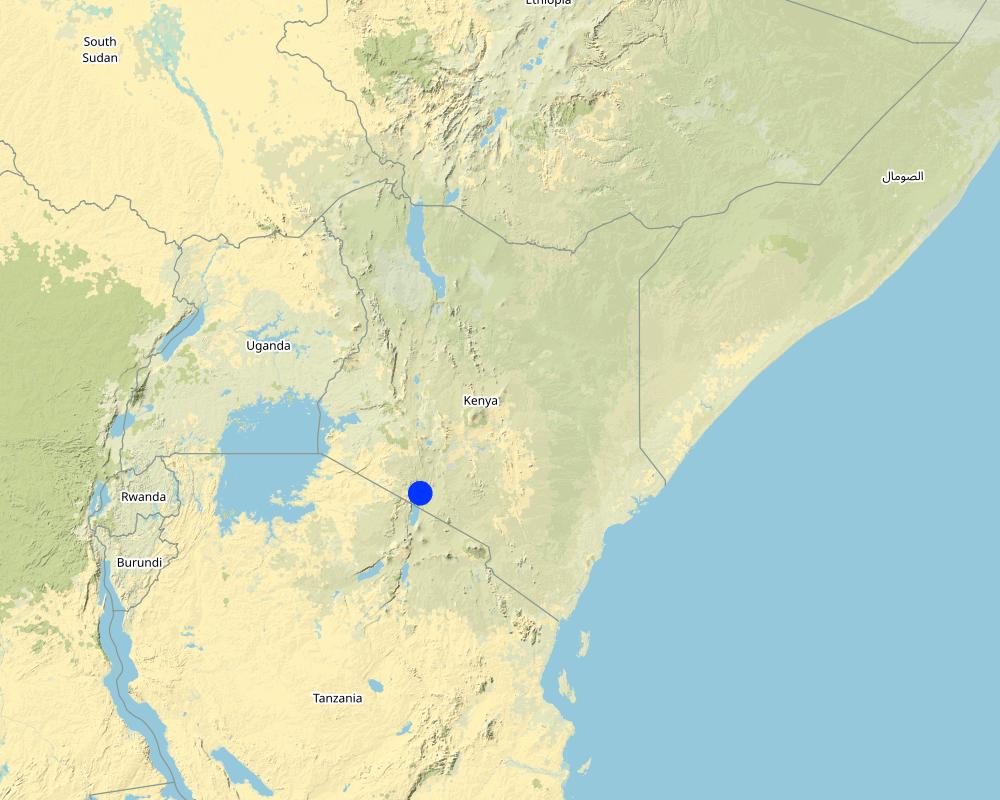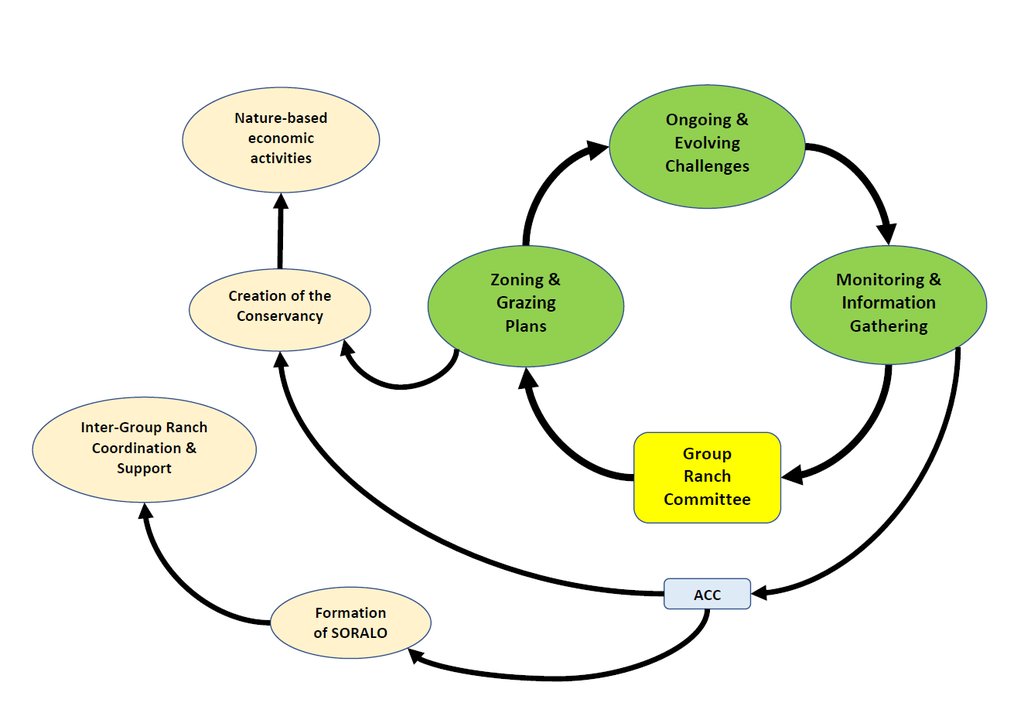Community-based rangeland management in the southern Kenyan rangelands [Kenya]
- Creation:
- Update:
- Compiler: Lance W. Robinson
- Editors: Enoch Mobisa, Peter Tyrrell
- Reviewers: Alexandra Gavilano, Rima Mekdaschi Studer, Hanspeter Liniger, Donia Mühlematter, Simone Verzandvoort, Joana Eichenberger
approaches_3321 - Kenya
- Full summary as PDF
- Full summary as PDF for print
- Full summary in the browser
- Full summary (unformatted)
- Community-based rangeland management in the southern Kenyan rangelands: March 13, 2018 (inactive)
- Community-based rangeland management in the southern Kenyan rangelands: April 20, 2018 (inactive)
- Community-based rangeland management in the southern Kenyan rangelands: June 22, 2018 (inactive)
- Community-based rangeland management in the southern Kenyan rangelands: Nov. 2, 2021 (public)
View sections
Expand all Collapse all1. General information
1.2 Contact details of resource persons and institutions involved in the assessment and documentation of the Approach
Name of project which facilitated the documentation/ evaluation of the Approach (if relevant)
Restoration of degraded land for food security and poverty reduction in East Africa and the Sahel: taking successes in land restoration to scale (ILRI)Name of project which facilitated the documentation/ evaluation of the Approach (if relevant)
Book project: Guidelines to Rangeland Management in Sub-Saharan Africa (Rangeland Management)Name of the institution(s) which facilitated the documentation/ evaluation of the Approach (if relevant)
International Livestock Research Institute (ILRI) - Kenya1.3 Conditions regarding the use of data documented through WOCAT
When were the data compiled (in the field)?
01/10/2017
The compiler and key resource person(s) accept the conditions regarding the use of data documented through WOCAT:
Yes
1.4 Reference(s) to Questionnaire(s) on SLM Technologies
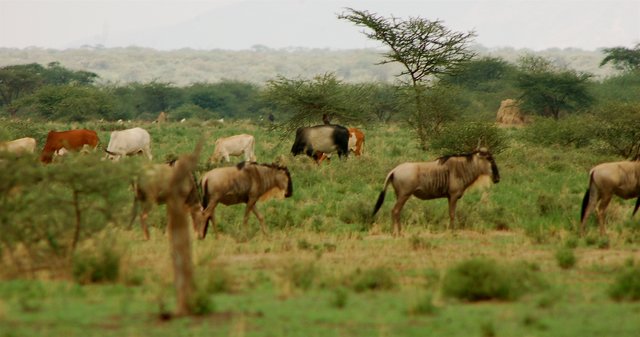
Ecosystem-wide seasonal grazing management in community land [Kenya]
Livestock movements are managed through community governance systems to maintain spatial and temporal heterogeneity of pasture, creating a gradient of quality and quantity of pasture across the landscape. This is achieved through clearly designated seasonal grazing areas for livestock and tight controls on settlement areas, grazing patterns and water points. …
- Compiler: Peter Tyrrell
2. Description of the SLM Approach
2.1 Short description of the Approach
Olkiramatian Group Ranch strengthened the capacity of its community governance structures and began to engage in more rigorous implementation of seasonal grazing plans. This was based on traditional ecological knowledge and rangeland management practices. The group ranch incorporated conservation, research, and joint rangeland management planning with neighboring communities.
2.2 Detailed description of the Approach
Detailed description of the Approach:
Prior to implementation of the approach described here, rangeland management was carried out through customary institutions supported by a group ranch committee. However, many challenges hindered effective management of livestock and natural resources. These included:
• Poor financial management
• Lack of accountability from the leaders - and lack of demand for accountability from the members
• Conflicting group and individual interests
• Lack of a written constitution and grazing by-laws to reinforce traditional decision making.
To minimize and overcome some of these weaknesses, the African Conservation Centre (ACC), a conservation NGO and Southern Rift Association of Land Owners (SORALO), a Maasai land trust, worked with Olkiramatian and other communities to help them strengthen their planning and governance and to reinvigorate the traditional system of grazing management. Initially, ACC worked with the community’s governance and resource management committees to build local capacity for decision-making and resource management. Institutions previously responsible for resource management, which had existed under traditional systems, had begun to weaken from both internal and external pressures, undermining the long-term sustainability and equity of rangeland management. The group ranch emerged as the key modern institution within this community and needed to be strengthened to support traditional management. To do this several sequential steps were taken:
(i) First, the group ranch committee instituted a more objective way of identifying and electing office holders, to ensure a credible base for resource governance and building consensus among resource users;
(ii) Registration of group ranch members was re-initiated to ensure equal access and rights to resource use, and to provide clarity around membership;
(iii) Institutions responsible for rangeland management, including the group ranch committee, and the conservation and grazing subcommittees, were reinforced primarily through the strengthening of internal capacity;
(iv) ACC facilitated a process for consolidating the group ranch's governance and by-laws to help guide the implementation of the strategy, including enforcement;
(v) The group ranch implemented provisions for holding leaders accountable, allowing the group ranch members to demand their rights;
(vi) Decision-making processes were facilitated by laying down procedures for sharing information and apportioning responsibilities among the leadership - as decided at annual general meetings;
(vii) Rangeland monitoring groups and rangers, mostly local youth, were trained and positioned;
(viii) Finally, the Lale’enok Resource Centre was established, together with community enterprises based on the use of natural resources. A women’s group was included.
An important catalyst in the approach was the establishment of a community conservation area and lodge within the group ranch for the development of wildlife tourism. The conservation area capitalized on the existence of the community’s dry season reserve where wildlife such as zebra and giraffes were abundant , which is only grazed by livestock after pasture is utilized elsewhere. This creation of a conservation area, coupled with the desire to generate revenue through tourism with its semi-exclusive access rights to parts of the conservation area, worked to reaffirm the traditional grazing management strategies by preventing settlement within the conservation area and encouraging longer resting of pasture following rain. This happened alongside the development of a research program , which has helped to put community rangeland management on an evidence-based foundation.
With guidance, the community revised its grazing plan and zoned its land into four resource use areas, now embodied in the new group ranch constitution:
- Conservation or wildlife areas (which then allowed the creation of the conservancy);
- Agricultural/crop production areas;
- Livestock grazing areas (dry season and wet grazing areas);
- Human settlements.
The grazing sub-committee of the group ranch makes and implements decisions on livestock access to certain areas, with pasture rested between and across seasons. The conservancy is rested from livestock grazing as a “grass bank” during the wet seasons, which can last up to 6 months . Settlement areas are also tightly managed under this approach to preserve pasture heterogeneity and prevent local degradation. Fines are imposed on herders who break grazing regulations. On a rolling basis the communities now utilize traditional ecological knowledge, ecological monitoring and expert knowledge, to reassess these grazing regimes under changing conditions. These rangeland management activities are also nested within joint, inter-community planning such as regular meetings of the grazing committees of clusters of group ranches.
2.3 Photos of the Approach
2.5 Country/ region/ locations where the Approach has been applied
Country:
Kenya
Region/ State/ Province:
Kajiado
Further specification of location:
Kajiado West Constituency
Map
×2.6 Dates of initiation and termination of the Approach
Indicate year of initiation:
2004
Comments:
The approach is on-going.
2.7 Type of Approach
- Hybrid traditional/project-based
2.8 Main aims/ objectives of the Approach
To enhance sustainable livelihoods for pastoralist community members through informed, sustainable use of their resources in an equitable manner.
2.9 Conditions enabling or hindering implementation of the Technology/ Technologies applied under the Approach
social/ cultural/ religious norms and values
- enabling
Uniform ethnicity. Communal land tenure. The pre-existing customary institutions and the group ranch committees. The government decree on the establishment of group ranches. The strong traditional and cultural knowledge about rangeland and livestock management.
- hindering
Cultural beliefs: large numbers of livestock are seen as a status symbol; resulting in potential overstocking of livestock.
availability/ access to financial resources and services
- hindering
Financial resources are limited for the group ranch committee; they depend on small collections at local markets and some donor financing to enact projects.
institutional setting
- enabling
The group ranch was already established and practicing planned grazing according to customary rules.
legal framework (land tenure, land and water use rights)
- enabling
There is a strong body of legislation developing in Kenya to ensure sustainable use of rangeland resources. This includes the new Community Land Act (2016), which creates local governance institutions with protection of grazing; the Wildlife Act (2012), creating community conservation areas and allowing benefits and compensation from wildlife; the Water Act (2016) and the Water Resource Users Association encourage multi-user analysis and cooperation to protect the quantity and quality of water for all users within a catchment.
land governance (decision-making, implementation and enforcement)
- enabling
The group ranch committee is the highest decision-making body. There is a grazing sub-committee which manages the details of seasonal grazing patterns.
knowledge about SLM, access to technical support
- enabling
The community is networked to researchers and technical experts from institutions including ACC, SORALO, Universities and TATA chemicals; through the Lale'enok Resource Centre. Mobile phones and access to internet has enhanced access to technical information. There is a wealth of traditional knowledge within the older generation who understand the requirements for sustainable management of the landscape.
- hindering
Low capacity of the many community members to tap into the existing knowledge bases. Lack of technical capacity to address specific research needs identified by the community.
markets (to purchase inputs, sell products) and prices
- enabling
Livestock markets within reach of the community members - the Shompole crossborder livestock market is in the neighboring conservancy.
- hindering
Low livestock prices at the grassroots present a challenge to the growth of the livestock value chain. A solution may be the facilitation of more direct market linkages.
workload, availability of manpower
- enabling
The community members are involved in the process as part of their lifestyle. Planned grazing made it easier for them to take of their livestock and reduce the number of people required to herd their livestock.
3. Participation and roles of stakeholders involved
3.1 Stakeholders involved in the Approach and their roles
- local land users/ local communities
Members and executives of the group ranch committee.
Individual members of the group ranch, as rangeland users and through their grazing patterns according to the ranch's grazing plans, contribute to management.
- community-based organizations
Olkiramatian Group Ranch.
The group ranch, through its democratic structures, has the ultimate responsibility for decision-making for the group ranch, including rangeland management and grazing planning, partnerships, fund raising and financial management, etc.
- SLM specialists/ agricultural advisers
Personnel of SORALO and ACC.
Provision of technical advice and support.
- researchers
Students.
Students, both Kenyan and international, hosted by SORALO and ACC, carry out research on conservation, ecotourism, land use, rangeland condition, etc.
- NGO
SORALO and ACC.
Research guidance, and connection with other government, NGO and donor agency stakeholders. Also provision of technical advice and support (see SLM Specialists/Agricultural Advisers, above).
If several stakeholders were involved, indicate lead agency:
Olkiramatian Group Ranch
3.2 Involvement of local land users/ local communities in the different phases of the Approach
| Involvement of local land users/ local communities | Specify who was involved and describe activities | |
|---|---|---|
| initiation/ motivation | self-mobilization | The community invited ACC to come and support conservation work and improve ecotourism. A visiting researcher from ACC identified opportunities for reinvigorating the group ranch structure and nature-based enterprises. The work of the researcher contributed to the approach, but the ultimate push came from the community. |
| planning | self-mobilization | The community evolved into an organized group and was determined to employ good resource practices to improve the rangelands and the lives of the people. They sought the help of ACC in strengthening their capacity to fundraise and improve community enterprises. SORALO was established to continue supporting the community in networking and supporting the conservation work. |
| implementation | interactive | The committee members, the individual members implement the approach. SORALO and to a less extent ACC, play advisory roles. The community members provide labour and time as their in-kind contribution. ACC help the community raise funds for the implementation. |
| monitoring/ evaluation | interactive | With guidance from SORALO, monitoring is done by community members. The various committees have a monitoring component in their work. |
| Research | interactive | At the beginning, research was done by a scientist from ACC. Later on in the approach, the community youth have been trained and are actively involved in research activities. |
3.3 Flow chart (if available)
Description:
Adaptation to evolving challenges through the community's governance structure -- the group ranch committee -- is at the centre of the approach.
Author:
Enoch Ontiri and Lance Robinson
3.4 Decision-making on the selection of SLM Technology/ Technologies
Specify who decided on the selection of the Technology/ Technologies to be implemented:
- mainly land users, supported by SLM specialists
Explain:
The group ranch members are the collective owners and, through the Group Ranch Committee, managers of the land. They receive support and guidance from organizations such as the African Conservation Centre (ACC) and Southern Rift Association of Land Owners (SORALO) on techniques and practices to apply, but are themselves the primary decision-makers.
- Research and evidence-based decision-making played some role, but planning of technical practices to be implemented was primarily based on traditional knowledge
4. Technical support, capacity building, and knowledge management
4.1 Capacity building/ training
Was training provided to land users/ other stakeholders?
Yes
Specify who was trained:
- land users
If relevant, specify gender, age, status, ethnicity, etc.
Training was carried out primarily for group ranch committee members and other community leaders/elders, predominantly males. Training has also been done for the RETO Women's Group.
Form of training:
- Training workshops
Subjects covered:
The training to the women’s group was on improved bead-making and business management in order to exploit the tourism market.
Selected youth were trained as wildlife rangers and others as rangeland monitors. Species-specific teams were trained in tracking particular species such as lions.
4.2 Advisory service
Do land users have access to an advisory service?
Yes
Specify whether advisory service is provided:
- on land users' fields
- at permanent centres
Describe/ comments:
Advisory services provided by SORALO and ACC. A permanent resource centre, Lale'enok is present in the region.
4.3 Institution strengthening (organizational development)
Have institutions been established or strengthened through the Approach?
- yes, moderately
Specify the level(s) at which institutions have been strengthened or established:
- local
Describe institution, roles and responsibilities, members, etc.
The organizations African Conservation Centre (ACC) and Southern Rift Association of Land Owners (SORALO) have helped to strengthen the group ranch structures
Specify type of support:
- financial
- capacity building/ training
Give further details:
Primarily support has been through capacity building and training with the group ranch committee and other committees.
Additional support has been provided by SORALO through the provision of staff and labor for hosting community meetings; writing the constitution; producing maps and other information; conducting research into pertinent management issues.
ACC with funding from various sources helped to finance establishment of the conservation area and a lodge. The lodge pays a lease fee to the group ranch. Guests at the lodge pay a bed night fee which is paid to the group ranch committee and a conservation fee which goes to the conservation committee. The conservation fee pays for scouts and also finances conservation-related development such as fences, water pipelines, and other community projects.
4.4 Monitoring and evaluation
Is monitoring and evaluation part of the Approach?
Yes
Comments:
The community, especially youth, are involved in assessing the ecological status of the rangeland. There are ecological monitoring units which take censuses of flora and fauna. Community activity reports are written regularly. The major economic activity of livestock trade is monitored by a data collection team that visits the major livestock markets.
If yes, is this documentation intended to be used for monitoring and evaluation?
Yes
4.5 Research
Was research part of the Approach?
Yes
Specify topics:
- ecology
Give further details and indicate who did the research:
Research questions are often answered by visiting students and local scientists at the Lale'enok Resource Centre. These questions cover a diverse range of issues related to the socioeconomic and ecological factors affecting local livelihoods.
African Conservation Centre. Southern Rift Association of Land Owners. Graduate students hosted by these organizations.
5. Financing and external material support
5.1 Annual budget for the SLM component of the Approach
If precise annual budget is not known, indicate range:
- < 2,000
Comments (e.g. main sources of funding/ major donors):
The primary resource used for implementation of the approach is the time of community members. Inputs from supporting organizations ACC and SORALO, while relevant, have been secondary to the approach and hence are not included in the budget here.
5.2 Financial/ material support provided to land users
Did land users receive financial/ material support for implementing the Technology/ Technologies?
No
5.3 Subsidies for specific inputs (including labour)
- none
If labour by land users was a substantial input, was it:
- voluntary
Comments:
Implementing the approach is just a lifestyle for the community members.
5.4 Credit
Was credit provided under the Approach for SLM activities?
No
5.5 Other incentives or instruments
Were other incentives or instruments used to promote implementation of SLM Technologies?
Yes
If yes, specify:
Ecotourism revenue provides some incentive to carry out and continue with rangeland management activities.
6. Impact analysis and concluding statements
6.1 Impacts of the Approach
Did the Approach empower local land users, improve stakeholder participation?
- No
- Yes, little
- Yes, moderately
- Yes, greatly
Did the Approach enable evidence-based decision-making?
- No
- Yes, little
- Yes, moderately
- Yes, greatly
Ecological monitoring and research are prominent aspects of the interventions and community-decision-making.
Did the Approach help land users to implement and maintain SLM Technologies?
- No
- Yes, little
- Yes, moderately
- Yes, greatly
It facilitated the implementation of seasonal planned grazing.
Did the Approach improve coordination and cost-effective implementation of SLM?
- No
- Yes, little
- Yes, moderately
- Yes, greatly
Coordination with neighbouring group ranches has been a key aspect of the interventions.
Did the Approach improve knowledge and capacities of land users to implement SLM?
- No
- Yes, little
- Yes, moderately
- Yes, greatly
Improved knowledge of rangeland and wildlife ecology.
Did the Approach mitigate conflicts?
- No
- Yes, little
- Yes, moderately
- Yes, greatly
Involvement of customary institutions has contributed to mitigation and resolution of conflicts.
Did the Approach improve issues of land tenure/ user rights that hindered implementation of SLM Technologies?
- No
- Yes, little
- Yes, moderately
- Yes, greatly
In theory, tenure rights were already secure. However the weakness of the community institution--the group ranch--could have resulted in land fragmentation or alienation as it had done so in many other group ranches. Strengthening the group ranch's governance has strengthened tenure security.
6.2 Main motivation of land users to implement SLM
- increased production
The rangelands have increased pastures for livestock. Wildlife numbers in the rangeland increased. Ecotourism enterprises improved in the area.
- increased profit(ability), improved cost-benefit-ratio
- reduced land degradation
Splash erosion was reduced. Some areas that were bare started having regeneration of grass.
- rules and regulations (fines)/ enforcement
The rules and by-laws were revised and strategies for enforcement were improved. The group ranch, conservation and rangeland monitoring committees were strengthened.
- environmental consciousness
Community members are more aware of the role of wildlife and ecosystem on their lives. New women groups, the youth and other community members involved in research projects has improved their awareness.
- enhanced SLM knowledge and skills
The community is constantly involved in project work. Skills in ecological monitoring, ecotourism enterprises, rangeland monitoring, lion tracking all help the community members acquire skills.
- conflict mitigation
The program has enhanced cohesion and more integration of community members. The committees are an avenue for mitigating any disputes and resolving conflict in the community.
6.3 Sustainability of Approach activities
Can the land users sustain what has been implemented through the Approach (without external support)?
- yes
If yes, describe how:
The approach is based on ensuring strong, community-led governance. This has been achieved and is likely to be sustained.
6.4 Strengths/ advantages of the Approach
| Strengths/ advantages/ opportunities in the land user’s view |
|---|
| The approaches emanates from a strong community with a working customary rangeland management structure. Communal ownership of land and the community's sense of belonging and customary (tribal) right of access and use of natural resources all make it easier for the approach to be successful. |
| Strengths/ advantages/ opportunities in the compiler’s or other key resource person’s view |
|---|
| The approach is a bottom-up one that builds on traditional resource management practices, adapting them to evolving social, economic and biophysical conditions. This contributes to strong sense of community ownership. |
| As a community driven and implemented the approach, the cost is minimal. With the incorporation of the conservation/wildlife tourism component, a secondary source of income for the community structures and some individuals in the community is realized. |
| The climatic conditions that allow extensive livestock production and wildlife is also another advantage for the approach. The landscape lies between Nguruman escarpment on one side, Lake Magadi on the northwestern part and the Amboseli/Mt. Kilimanjaro on the southern part. These contribute to some degree of isolation and protection of influxes of herders from other locations. |
| The demonstrated success of the grazing management practices put in place has led to changed decisions and management practices reinforcing the community's willingness to continue with the system. |
6.5 Weaknesses/ disadvantages of the Approach and ways of overcoming them
| Weaknesses/ disadvantages/ risks in the land user’s view | How can they be overcome? |
|---|---|
| There is concern among some community members about the incorporation of conservation activities potentially leading to restrictions on mobility and access to pastures. | Continued awareness raising about the benefits and pre-empting misunderstandings about the conservation activities. |
| The community success in rangeland management is sometimes viewed as a source of failure. This is because the community holds some customary beliefs and norms that allow for practices like reciprocal grazing by other pastoralists on their land. In the case that Olkiramatian is the best quality grass bank during extended droughts, livestock from other communities flock there and mostly cause overgrazing, degradation, and social conflict. | The idea of SORALO networking all the landowners in the southern rangelands and are helping them establish similar approaches means the whole rangeland in southern Kenya will become a continuous, homogenously managed landscape. |
| Weaknesses/ disadvantages/ risks in the compiler’s or other key resource person’s view | How can they be overcome? |
|---|---|
| The capacity of the group ranch committee to raise and attract appropriate human and financial resources is low. | Continued training on effective governance and help in putting in place working systems. |
| The stocking rates of livestock per household are not corresponding to the holding capacity of the rangeland. | Continued action research and training of the locals on the need to reduce livestock numbers. |
7. References and links
7.1 Methods/ sources of information
- interviews with land users
12 focus group discussions.
- interviews with SLM specialists/ experts
9 key informant interviews.
- compilation from reports and other existing documentation
peer reviewed journal papers. project reports.
7.2 References to available publications
Title, author, year, ISBN:
Community-based Rangeland Management in Shompole and Olkiramatian Group Ranches. Ontiri, Enoch M. and Lance W. Robinson. 2018.
Available from where? Costs?
cgspace.cgiar.org -- open access
7.3 Links to relevant information which is available online
Title/ description:
Seasonal movements of wildlife and livestock in a heterogenous pastoral landscape: Implications for coexistence and community based conservation
URL:
https://www.sciencedirect.com/science/article/pii/S2351989417301075
Title/ description:
Lale'enok Resource centre
URL:
https://laleenok.wordpress.com/history/
Links and modules
Expand all Collapse allLinks

Ecosystem-wide seasonal grazing management in community land [Kenya]
Livestock movements are managed through community governance systems to maintain spatial and temporal heterogeneity of pasture, creating a gradient of quality and quantity of pasture across the landscape. This is achieved through clearly designated seasonal grazing areas for livestock and tight controls on settlement areas, grazing patterns and water points. …
- Compiler: Peter Tyrrell
Modules
No modules


